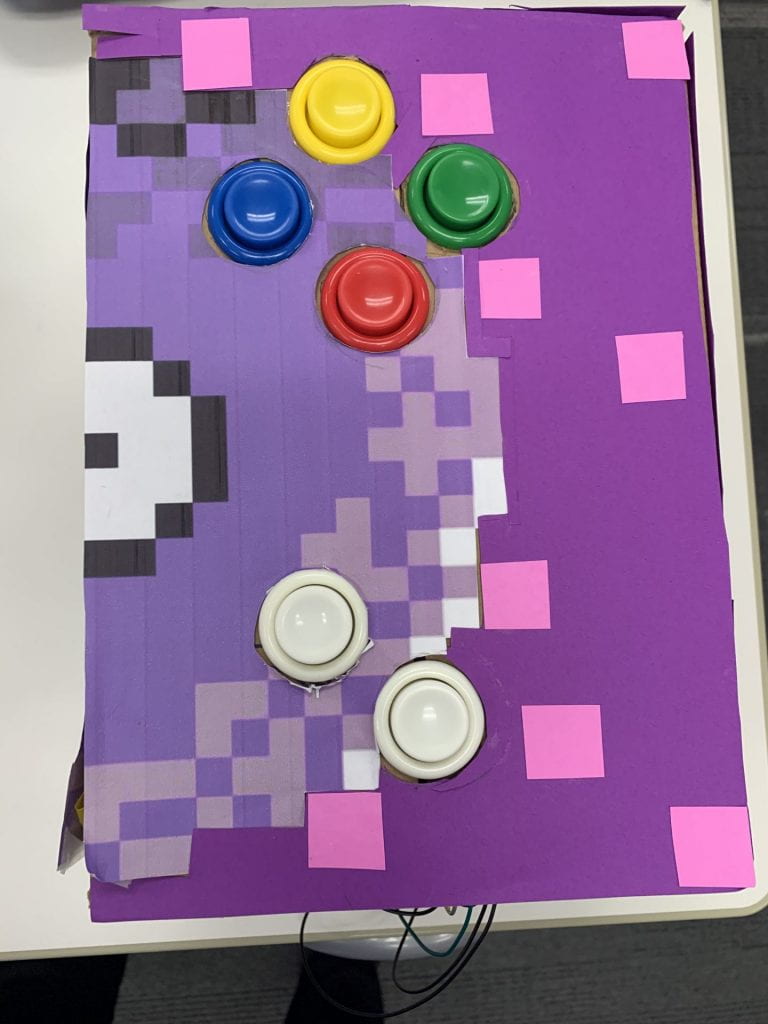Before I get into this post I just want to say that this post is sort of a continuation of a previous post I’ve made and I suggest you check that out if you haven’t yet. In case you don’t want to read that long article, in short, in CSAI class, we were tasked with coding maze games. I made a game in which you explore a dungeon, find treasure, fight monsters, and buy upgrades to try to defeat the final boss. Now, onto what I’ve been working on since.
After finishing the coding for our games, we began making controllers for our game. Everything we needed was given out and after being shown how to make the mechanical parts of the controller, we began construction. We started off with a practice controller. We just used a flat piece of cardboard and a plastic box to put it on top of. I continued by cutting out and putting buttons into the cardboard to use as controls. I then began making wires with which to connect the buttons for the Raspberry Pi which I was going to be using to play my game on. To make these wires I took off one end on two wires and connected them using electrical tape. Then on another end on one of the wires I connected a terminal so that the wire can plug into the buttons.
After finishing up with all the wires I connected the Raspberry Pi to a monitor and a power cable. The pi connected and at first everything seemed to go well but once I stared connecting the wires from the buttons to the pins in the micro bit, everything stopped working. To this day I’m not sure why.
My teacher, Mr. Dembo, gave me a new Raspberry Pi and after I connected everything to the new Pi, the buttons started working.
The prototype was complete and I began work on the final design. I used a regular box for the controller and I went through the same steps I had gone through for the prototype, though this time I didn’t need to make new wires as I could use the ones I’d made earlier. I put in the buttons, connected the wires and tested that everything worked.

The buttons, to my delight, worked first time and it was amazing to play a game that I had coded on a controller that I had made. To be honest, this is one of the first mechanical projects that I’ve made which have worked just as intended, so yeah, it felt pretty cool playing on the controller. All I needed to do now was to make the controller look better. I connected the Micro Bit to the side of the box using wires to make it accessible and covered the box with purple construction paper and an image of the hero character in my game. Here’s the result:


Anyway, this was a big project and I’m quite happy with the result. Hope you guys enjoyed this blog post, bye!
